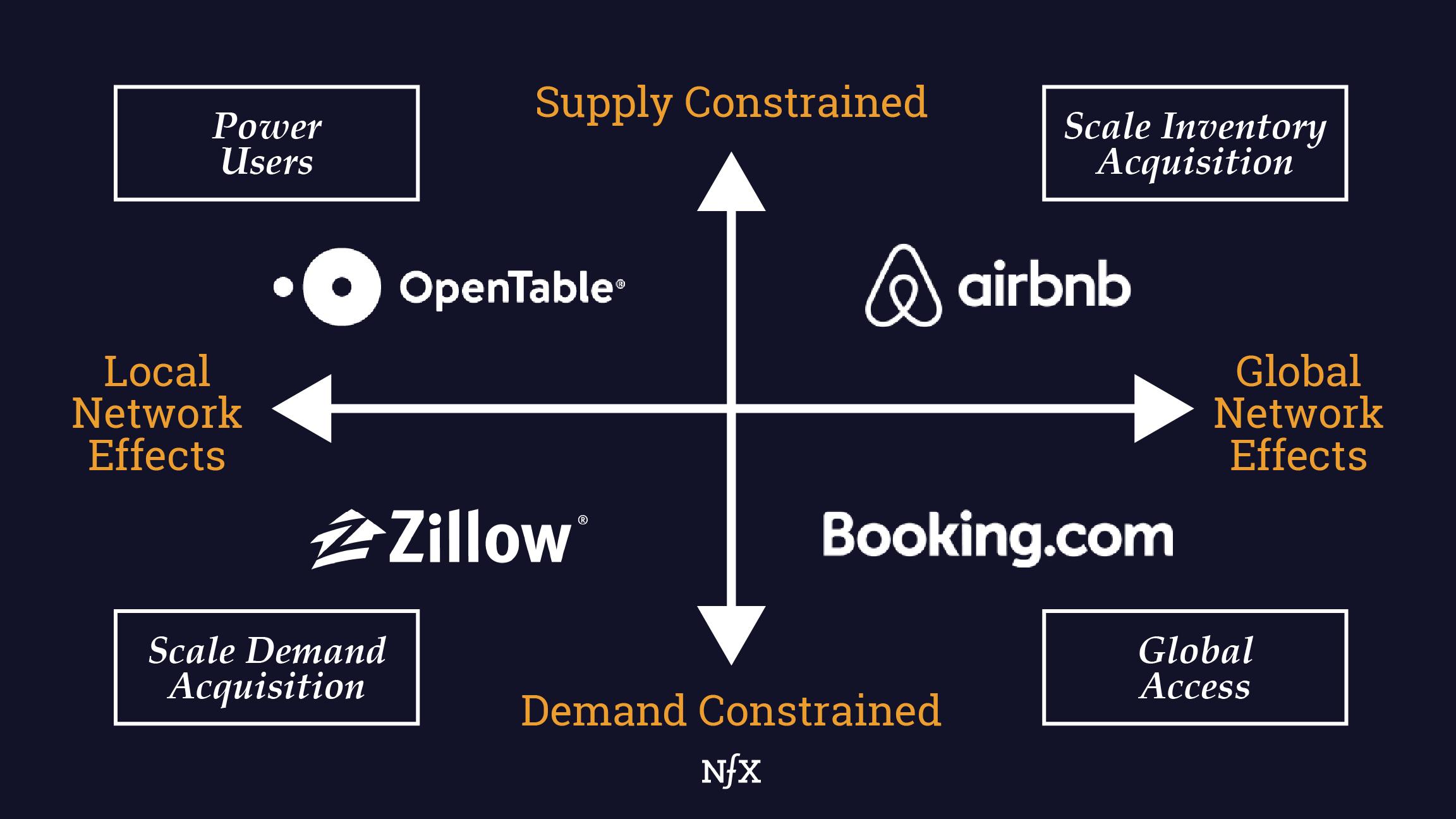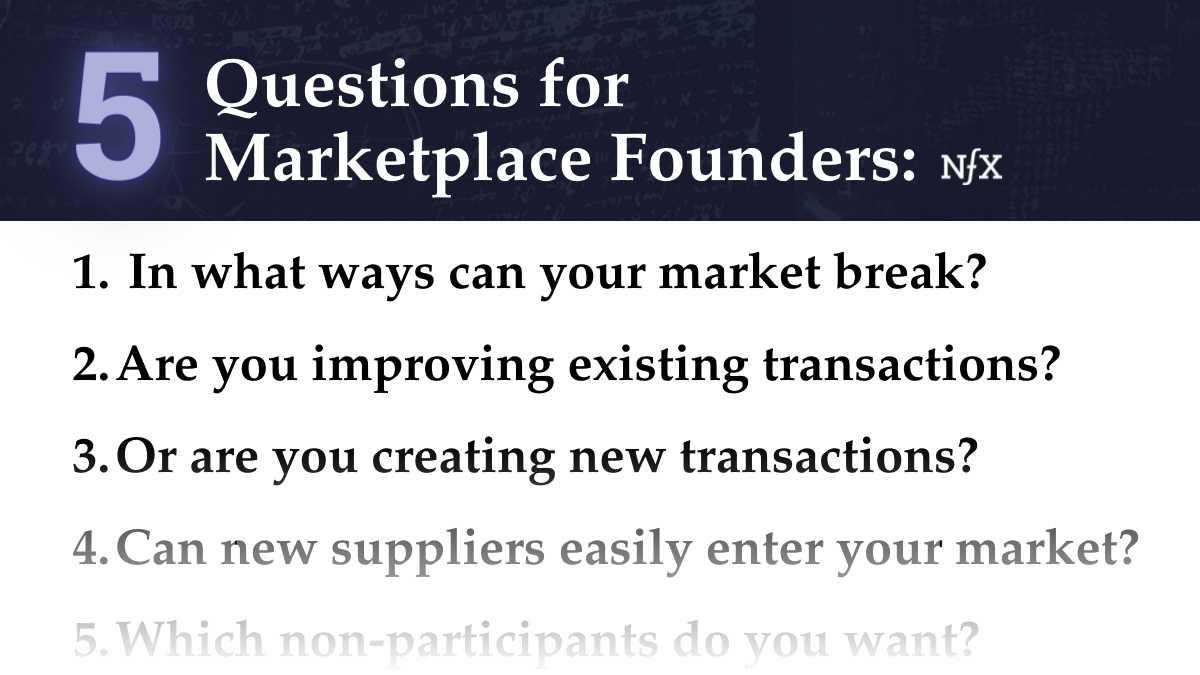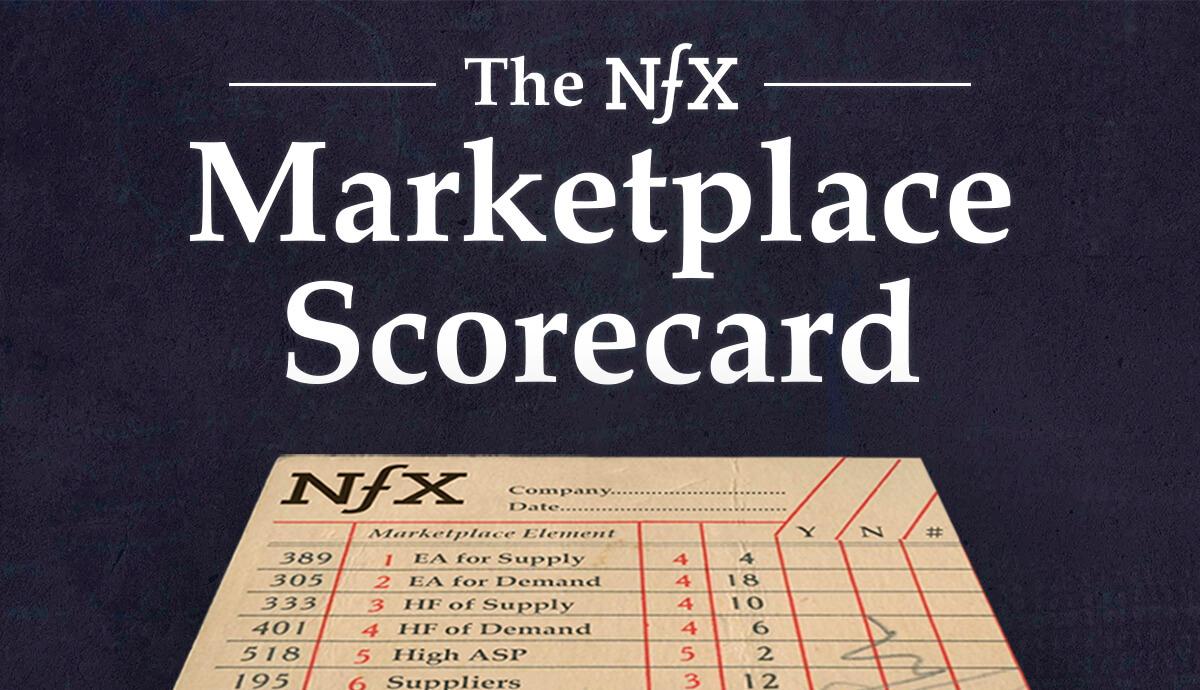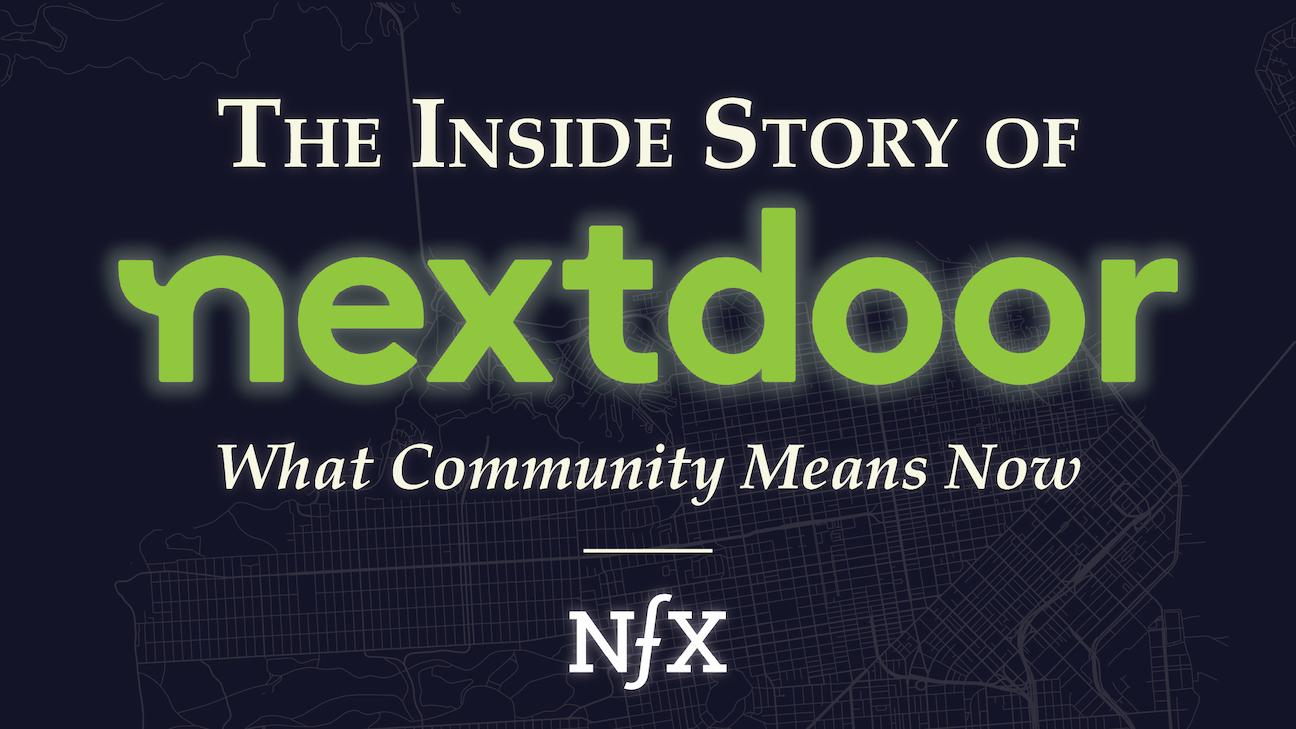

Here we are nearing the close of 2021. We’ve all spent nearly 2 years living increasingly digital lives and our ideas and expectations of social networks continue to morph more rapidly than ever.
There’s more tension than there is harmony between “offline vs. online” — and yet one company is uniquely positioned to bridge the two for the benefit of us all.
Nextdoor, the social media app for neighborhoods, which is actively used in 1 in 3 households in the U.S., was recently valued at $4.3B and listed on the NYSE. This essay is a glimpse into the thoughtful, humanist view of Sarah Friar, the CEO of Nextdoor (former CFO of Square and board member of Slack).
Today she cautions us not to disappear into the metaverse, and also encourages Founders now and tomorrow to cure gaps in the world — and do it with eyes wide open to consequences at scale.
Below are highlights and direct excerpts from my recent NFX podcast conversation with Sarah Friar.
Show Up In Real Life
As we all start to talk more about the metaverse, I really don’t want us to leave behind this incredible need for humans to connect in real life, and how important that is for our society.
While you can create a group on any social platform, you don’t know with certainty that the group could meet in real life. But the good news is that the vast majority of people are coming to a realization that offline communities are really important. 73% of the neighbors we survey at Nextdoor say that their neighborhood is the most important community in their lives.
When communities are stronger, when more social capital is built, it’s good for everything. It’s good for your health. Wealth scores rise because the equity of your home rises. Schools do better because, as parents care collectively, it really helps kids. Kids benefit from their own parents, but they also benefit from groups of parents across the board who care and show up in real life.
Our research at Nextdoor shows that just knowing 6 neighbors has a statistically significant impact on feelings of loneliness and social isolation.
One of my most interesting conversations of the last couple of weeks was with the Surgeon General, Vivek Murthy. He’s written some incredible pieces on loneliness. [His book is: Together: The Healing Power of Human Connection in a Sometimes Lonely World, which discusses loneliness as a public health concern.] He summed it up by saying loneliness is the equivalent of smoking a pack of cigarettes a day. Vivek is still actively looking for a way to combat it.
Imagine if you went to the doctor and they said to you, “Okay, you need to eat your colors, take this amount of sugar out of your diet, walk 10,000 steps a day, and you need to know six neighbors.”
Those are actually very doable things for our collective health. Even if you’re doing it selfishly, for yourself, I think that’s a fine place to start because there’s a big “I” reason to start to get to know your community.
Nextdoor = Neighborhood
During Covid, as people have needed more around them locally, Nextdoor has come into its own. We are the place where you connect to the neighborhoods that matter to you so that you can belong.
I think people come to Nextdoor for 3 things:
1. They come, first of all, for trusted information. Nextdoor was founded on trust. We ask you to be a real neighbor at a real location. You’re not an avatar. You’re not a handle. You’re a real person.
2. The second reason they come is for local perspective. Nextdoor unlocks all that social capital of your neighborhood. When you go and ask a question, you’re truly getting the local perspective — not someone who’s maybe traveled there for a couple of weeks, not someone who lives outside the community. Asking for a plumber might not feel like a particularly high trust interaction, but that’s someone who’s probably going to come into your home, so getting the recommendation from a neighbor is really gold.
3. The third and final big reason people come to Nextdoor is all about proximity.
We always knew that Nextdoor worked in times of emergency because it is not usually your friends and family who save you in the moment of an emergency. If there’s a flood happening outside your home, when you’re on the roof, waiting for a boat to pick you up, which is truly what happened in Hurricane Harvey, it wasn’t your brother or your sister, or your mom, or your dad, it was your neighbors who came for you.
Similarly, in Covid, when people needed everything from toilet paper or pickups from the local pharmacy, it was the people nearby who stepped up.
We really feel like that is what differentiates Nextdoor as a social platform. Nextdoor is uniquely positioned because we know where people live, and we’re able to bring people together because they’re close to one another in the real world. What that does is it allows us to push from online to offline.
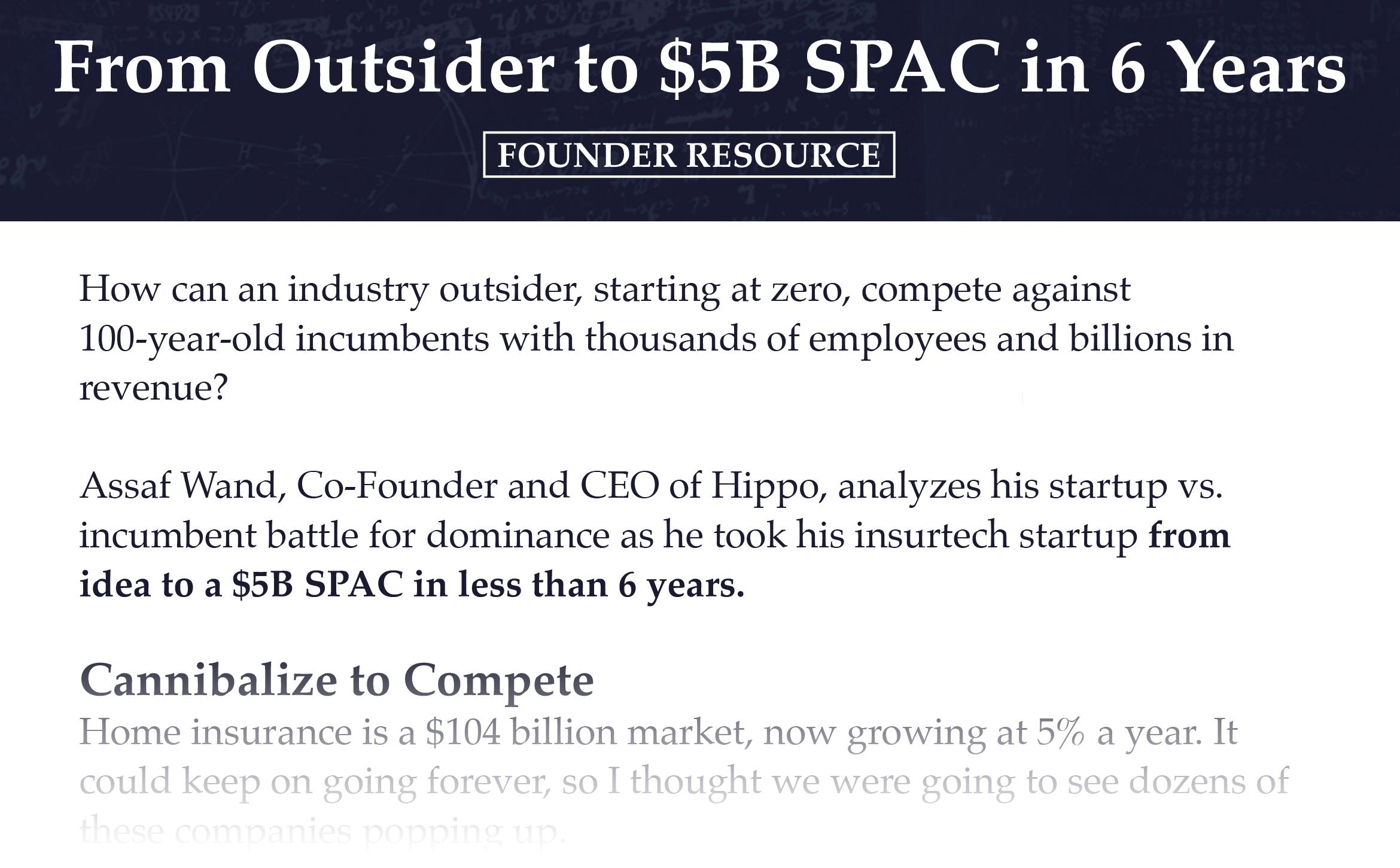

Is this the true mobile revolution? What happens to community now?
In talking to Brian Chesky at Airbnb recently, we were both caught up in this question: Is this the true mobile revolution? The first revolution was that we had become untethered. You could walk around with a phone in your pocket and figure a lot of stuff out on the go, that previously you had to be attached to something to do.
But is there now true mobility where people have realized that work is a verb, not a noun. For a long time, “work” was one of the things that tethered us most to a place.
If we have more ability to be truly mobile, what does that mean in a future state?
We’re trying to think about: How do you meld mobility with the community piece? How do you quickly let someone come into a community, who isn’t just a visitor for two weeks?
Maybe they’re a visitor for four months, so now they’re going to need the emergency dentist or the gutter cleaner or the plumber. They’re also going to want to find whatever their tribe is, like their running group or their mom’s group or maybe a trusted babysitter or a trusted dog walker.
Brian tends to go quickly to experiences: How do they really experience the true neighborhood? The most authentic experiences.
For me, I think before you learn how to make paella in Barcelona, you’ll want to know some practical things. Like what’s the best local supermarket to go buy the best vegetables? There’s a lot of utility to knowing what’s around you locally.
One big question we’re asking, and Founders might want to ask themselves: If you have this big mobile shift going on, how do we think about community in that context?
Nextdoor Growth Playbook
Who Can Help You Expand?
The question of how you get going, in any network effect business, is really hard. Because it’s great if you get someone to join a neighborhood, but if there’s no one else there yet and it’s just crickets, people won’t come back.
When I joined Nextdoor 3 years ago, we had about one in five households in the U.S. on the platform. Today we’re at 1 in every 3 households. We have this great benefit of scale, and with scale, we’ve done a lot of data aggregation for insights about where Nextdoor works and why.
Our marketing team would boil that down into four key groups, which are:
- Millennial parents. This is the moment where people really put down roots in a community, and often they’re making their next generation of friendships.
- What we call rapid responders. These are people who connect in emergency situations. This year we really focused on vaccine interest.
- The third group is movers or the people who relocated and are in their first 6 months of finding out everything about their new local community.
- And then the fourth group is urban enthusiasts. I think this is because in a city atmosphere we’re finding more and more people who want to find their tribes.
Once we look at it this way, when Nextdoor goes to a new country, for example, or a new city, we can quickly map the city and then look for patterns of places that we know Nextdoor naturally tends to thrive.
That’s where you can use big data to tell you, “Okay, where do you go first?” in a new market. But from there, it then flips to the other side, because you still just need a person. Sometimes it’s a public agency; they tend to get it very quickly because they’re often trying to build this internally. So, how do they find a distribution mechanism to their constituents? Big social media doesn’t really work for them because when you put it on Twitter or Facebook, it just goes broad. It doesn’t go surgically to your constituents.
You’re trying to find a couple of folks who understand and then you have to help them light the fire.
We do that initially through what we call neighbor-to-neighbor invitations. You find the first node on the network and get them to invite a hundred people. They’ll often already have a mailing list, so that very quickly, in a neighborhood context, can get you quite a lot of density.
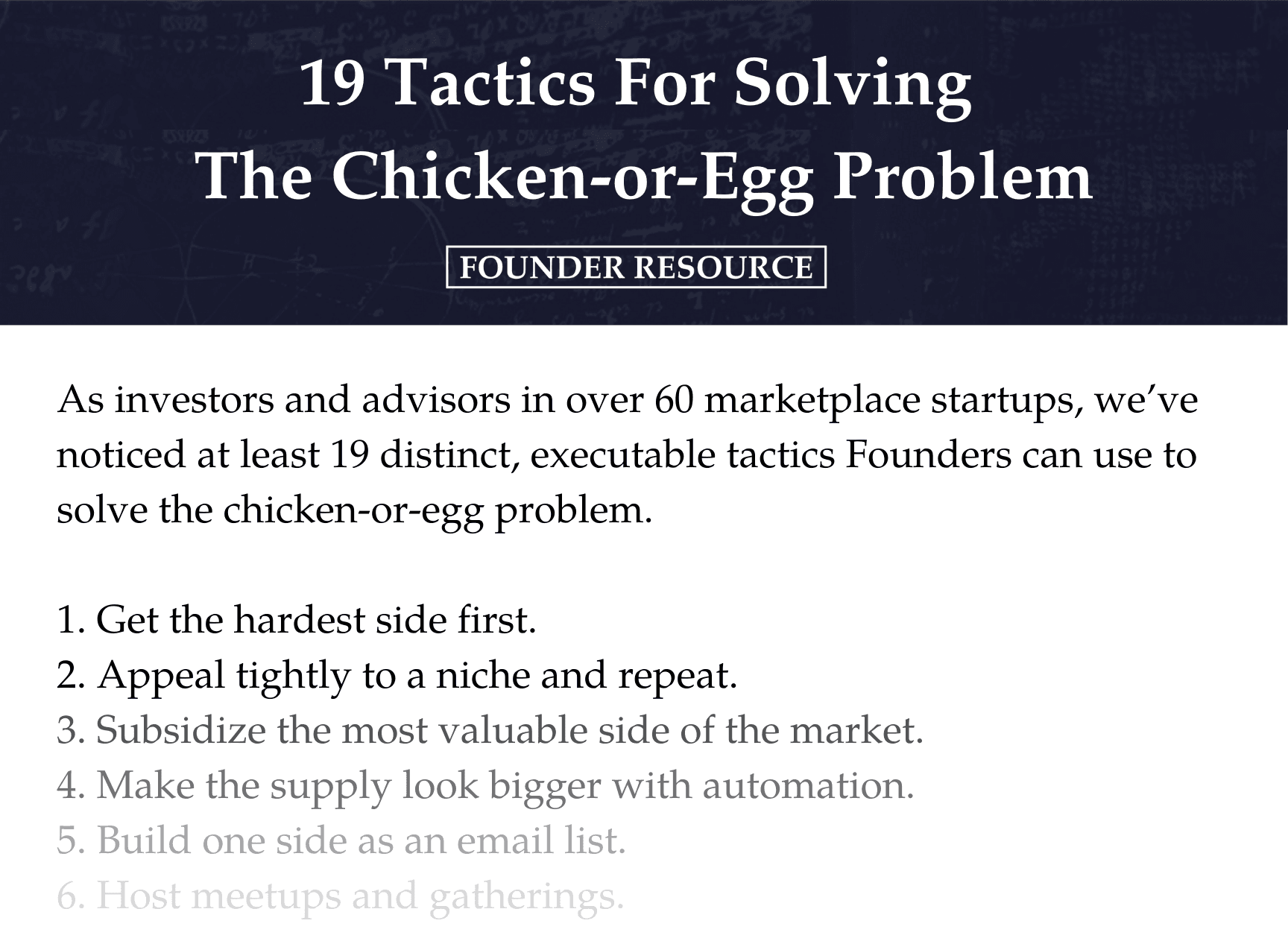

Growth via Liquidity of Content
There’s a couple of things we’ve done from a product perspective that has changed the pace at which we can grow now.
One thing was allowing content to go a lot freer. Originally, when I joined Nextdoor, our strategy was to be the private social network for your neighborhood. It was very insular and very singular. A neighborhood, remember, is only about 800 – 1,000 houses. It’s quite a small physical presence, so whenever someone spoke in a neighborhood, that content was stuck there.
But, for example, during the California fires, one of the things we see is when a fire breaks out, the community that’s impacted is very active on Nextdoor. They’re saving themselves, they might be evacuating. But the people in the next neighborhood over immediately want to know what’s going on, too.
Do I also need to evacuate? Am I safe? Then the neighborhood next door to them often wants to help. In this example, by tying up that content in just one place, we really lowered the liquidity of content on the platform. So, we changed that about a year ago and you can now post to anyone.
We gave control to the user so you can decide how far you want your content to travel. Most people, in the end, post to anyone and then that allows us to use technology to allow relevant content to keep moving and that just creates far more liquidity.
I think our combination of a growth playbook is both very granular, bottoms up people connections, and now also with top-down being much smarter about how the overall content gets created and then distributed.
If you look at Canada, it’s our youngest country. We launched it two years ago. It’s our fastest-growing, by far. Our WoW doubled again, just in Q3, in the quarter that we just finished. I think that was the perfect playbook of bringing all the stakeholders together, figuring out the influencers, bottoms up, country manager. It was phenomenal work layered on with top-down, really smart use of data aggregation and a clear understanding of where Nextdoor works and should be targeting.
But Avoid “Growth At All Costs”
Negative content is very engaging in the moment. But over a longer period of time, it really causes people to disengage, because they’re left with a feeling of, “This is not a group I want to belong to,” or even a disappointment, “Oh my goodness. I live here and these are the people that live around me?”
Negative content also feels very antithetical to our mission. Should we be amplifying very negative things just because it benefits us and we can sell against it? No.
One of the things I took away from working in fintech is that at the moment when we were about to launch the product, we would get together to ask ourselves, “Wait, what are the unforeseen consequences?” In fintech language, we would say, “How are you going to steal money using this product?” We would do a whiteboard session on all the ways someone might steal money because of our product, which, as the CFO… let’s say those were not nights when I slept well.
I think the same is true in any product. In social media, a lot of the “unthought about” consequences were all very seeable. I think this is the moment when you actually want your team also using their brains to think about, “Okay, we know that this can happen, so how do we make sure, even as we launch, that we’re also putting guardrails around it?” That’s really what I mean about not just growth at any cost. It’s about thinking about what’s further down the line.
By the way, with “the metaverse,” I feel the same way. At its extreme, we know exactly what the consequences will be: lack of human-to-human contact, lack of social capital being built, people only caring about themselves.
Think about how much time I, as a parent, spend trying to make sure my son doesn’t play Xbox all night. I want him out there physically in the world, experiencing nature, playing with his friends.
If we care about that one-on-one time with our family, why don’t we care about that in a broader context with all of our customers?
There’s so much that we should be accountable for here. We’re not going to be perfect. We’re going to make mistakes — but we should also bring in the people who are the naysayers, the people who will criticize you, the people who will say, “Well, not good enough” — because you need those voices around the table as well.
Human Beings Are Wired To Remember Stories
Every company has its purpose statement. Sometimes you put it up on the wall.
When I was at Square, if you really boiled it down, we were creating a not-particularly-sophisticated point-of-sale system for small businesses. But we never felt that way.
We were on a journey of economic empowerment. Our mission was to be on the side of the good, helping small businesses who would otherwise be discriminated against to get on the system that didn’t want them. We really felt this zeal.
When I got to Nextdoor, it was clear that our purpose is to cultivate a kinder world where everyone has a neighborhood to rely on. What we do is all about connecting communities, making communities stronger, more resilient. It is so important that you’re crisp on, “What is that purpose that people can really rally behind?” Constantly show the purpose and action.
I joined Nextdoor in early December 2018, and I remember we had a board meeting to prepare for on December 17th, 2018. It was quite an extraordinary two weeks.
One of the first things I did was change the board meeting materials. I changed them immediately to start with a picture of a person. The first page of our board pre-read has a picture of a neighbor, it’s always a new story, and then it has a short story about what they did on the platform. Then in every break, ahead of the financial section, ahead of the deep-dive section, we have these little vignettes about neighbors on the platform. That really surprised the board, because after a couple of board meetings they’re like, “Wow! We’ve never really thought about the platform coming to life like that.”
I also immediately wanted to see the sales deck. I said, “Okay, sales team, when you go out and talk to advertisers, show me what you’re showing them.” I couldn’t even get past the cover page, because the cover page was this picture of a cul-de-sac of houses with no people. There were no people, I said, “Oh my God, the rapture happened! Where did all the people go?”
I wouldn’t even let them start to present. “Please let’s add back the people because that is what we stand for.” They had to go away, restart, get another meeting on the calendar to come back to make their pitch, which changed dramatically, in terms of suddenly you started to see the storytelling coming through.
I learned this as an analyst. At the time, I was at Goldman. When you’re a research analyst, you do this thing called the morning call. You have approximately one minute to pitch a stock to the entire salesforce. You always start with, “This is Sarah Friar. I’m on the morning call to pitch a buy on [Pick a company].” You want to close with the price target. But in the middle, you can either get into a whole bunch of technical stuff, or if you just tell them a story, like “I met the CIO the other day, and here’s what he told me.”
They will not remember any of the technical stuff you gave them. Human beings are wired to remember stories. They’re not particularly wired to remember numbers.
I think that’s something for Founders to think about. Whether you’re pitching for money, you’re pitching for a customer, or you’re pitching for a partner, there’s just tremendous power in the story of your company. Don’t lose that, because that’s what gives it purpose, feeling, and meaning.
The KIND IPO: “Are you doing the right thing in the world that customers want?”
Nextdoor listed on the NYSE under the ticker symbol “KIND.” Sarah is no stranger to taking companies public. For Slack, she was on the board of directors when they went public via a direct listing. At Square, she ran the IPO as their CFO. Now at Nextdoor, she took the company public via SPAC.
Going public is a fundraising journey. I actually think it starts with saying, “Do we need to raise capital? If so, can we deploy it in a really ROI positive way?”
By the way, whether you go out to raise capital or not, that’s just an important exercise to do on a fairly regular basis at your company. Not just once a year during your annual planning, but I would say probably every six months. Every quarter is probably a little too frequent.
If the answer to that is yes, then it’s the decision-making tree. Do we want to raise money privately or publicly? Private money is certainly available right now and in very large quantities, but it does tend to be more expensive.
I think the good thing about deciding to shift gears into a public market context is, number one, it’s a credentialing moment. It’s truly a moment where a company comes out, which gets back to transparency. There’s a lot of transparency now.
For companies like Square, it was really good because you could see our balance sheet. That mattered a lot because we were handling people’s money. In the case of Nextdoor, I think it puts a spotlight on us to make sure that we are stepping up to the plate on some of those unforeseen consequences of platforms in our space.
I think the second benefit to getting public-company-ready is probably the most important thing you do is really to understand your business, because you need to be able to forecast it. The street will really demand that there is some predictability. That is also a very good exercise to go through with your team.
You’re not just hand waving about, “Oh, and then this will happen.” You’re actually showing how it will happen, how you’re measuring it, what gives you the confidence? What probabilities can you add to it?
The reason we chose the SPAC route for Nextdoor was, first of all, there was clearly a demand-supply imbalance in the market, which we were able to take advantage of because there were lots of funds looking for targets. Second, what I really enjoyed about it was the ability to meet and talk to investors over this much more extended period of time.
Unlike the IPO process where you do a whole bunch of work behind the scenes, then you do this mad dash IPO roadshow that is exhausting. It’s nuts. You meet with 50 investors over a week and a half, two-week period. It’s even more if you think about the group lunches and so on. You’re probably meeting 200 to 300 investors over a two-week period. It’s horrible.
Whereas in the SPAC process, we probably met the same number of investors, but we met them over a six-month period. This actually allowed us to get a lot sharper on our story, on how we positioned it.
We did an investor day where 750 people were able to tune in. We did an analyst day. It felt like a well-paced way of building partnerships. Then, of course, we have price certainty because we set our price back in July. So, we know what the goal is that we were running to. Of course, there’s still the stress of how your stock will trade.
My job is to keep reminding the company that in the short run, the market is a popularity machine or a voting machine. But in the long run, it’s a weighing machine.
There’s an incredibly powerful quote from the grandfather of all investing, Benjamin Graham, about remembering that you have to control what you can control: the fundamentals of your company, the growth rate of your company.
Are you doing the right thing in the world that customers want?
To hear more from Sarah Friar, listen to our full podcast conversation here
* * *
This content is provided for informational purposes only, and should not be relied upon as legal, business, investment, or tax advice.
As Founders ourselves, we respect your time. That’s why we built BriefLink, a new software tool that minimizes the upfront time of getting the VC meeting. Simply tell us about your company in 9 easy questions, and you’ll hear from us if it’s a fit.

